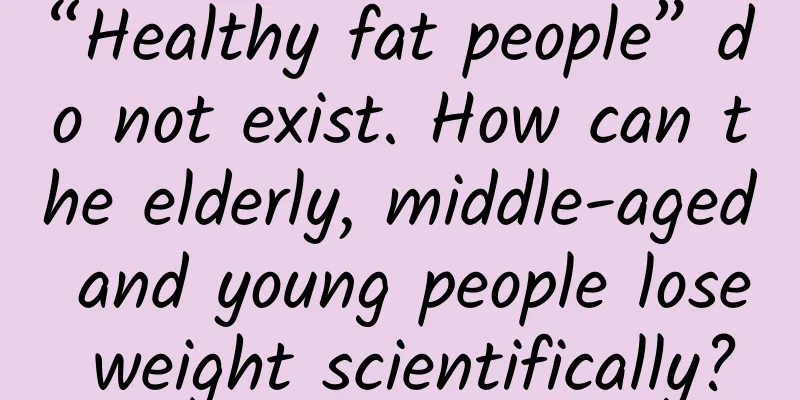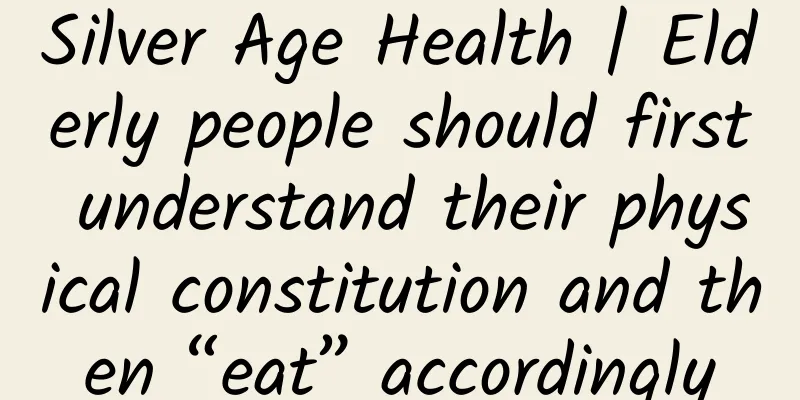“Healthy fat people” do not exist. How can the elderly, middle-aged and young people lose weight scientifically?

|
According to research statistics, about one-fifth of cancers worldwide are related to obesity, and the incidence of at least 200 other diseases is more or less related to obesity. In addition, obesity is listed by the World Health Organization (WHO) as one of the factors that are likely to cause severe COVID-19. Generally speaking, all overweight and obese patients need to be treated with a combination of diet, exercise, and behavioral correction. 0 1The fatter a person is, the harder it is to lose weight through exercise? John Roger Speakman, chief scientist of the Shenzhen Institute of Advanced Technology of the Chinese Academy of Sciences, and his team, in collaboration with an international team, published a research paper titled "Energy compensation and adiposity in humans" in Current Biology, a subsidiary of Cell. The paper pointed out that the fatter a person is, the more energy compensation they need, and the more difficult it is to lose weight through exercise. This study reveals that when formulating weight control strategies for obese people, they should take into account the body's energy compensation after exercise for different individuals, and formulate personalized exercise weight loss plans to achieve better weight loss through more effective measures. The Expert Consensus on TCM Diagnosis and Treatment of Obesity (2022 Edition) recommends clinical exercise regimens: 1. Aerobic exercise . For overweight or obese patients, the initial requirement is to increase the amount and intensity of exercise. Moderate-intensity aerobic exercise is recommended, with a total exercise time of >150 min/week and 3 to 5 training sessions per week. 2. Resistance exercise . For overweight or obese patients undergoing weight loss therapy, resistance training is recommended to help preserve fat-free body mass while promoting fat loss; the goal should be 2 to 3 resistance training sessions per week, mainly consisting of single muscle training using major muscle groups. There are two basic forms of exercise for elderly obese patients : whole-body exercise and static exercise to enhance muscle strength. Aerobic exercise can be chosen, such as walking, jogging, doing elderly fitness exercises and Tai Chi, etc. The amount of exercise should be based on the patient's tolerance, and the calorie consumption should be increased slowly. Patients with cardiovascular and cerebrovascular complications should be cautious. The intensity of exercise should be such that the heart rate does not exceed (170-age) beats/minute during exercise, and the patient is energetic and has no obvious fatigue after exercise. Patients with uncontrolled hypertension, angina pectoris, and heart failure should refrain from exercise. 0 2Is the effectiveness of intermittent fasting for weight loss questionable? In the past few years, intermittent fasting has gradually become a popular way to lose weight. Because intermittent fasting is safe and effective for short-term weight loss, it can be used by severely obese teenagers, diabetics, and people with high blood pressure. Intermittent fasting can be simply defined as alternating fasting periods with eating periods. The intermittent fasting patterns that have been most studied in the past include: (1) alternate-day fasting: alternating fasting days (0–500 kcal) with eating days (with no limit on intake); (2) 5:2 fasting: fasting two days a week and no limit on intake on five days; and (3) time-restricted eating: eating only within a specified time range each day. 1. Breakfast 7:00-7:30: 250 ml skim milk; 1 sweet potato (about 50 grams); 1 boiled egg (about 50 grams). In addition, the Expert Consensus on TCM Diagnosis and Treatment of Obesity (2022 Edition) recommends the following clinical diet plan: (1) Restrict energy balance diet; ① Reduce the target intake by a certain proportion (reduced by 30%~50%); ② Reduce the target intake by about 500 kcal per day; ③ Supply 1000~1500 kcal per day. (2) Treat the diet according to syndrome differentiation: For example, people with phlegm-damp constitution should eat less fatty, sweet, oily, and sticky (greasy) foods, and should choose foods that strengthen the spleen and promote digestion, and eliminate dampness and phlegm; people with damp-heat constitution should eat less warm, spicy, and yang-boosting foods, and should choose foods that clear heat and eliminate dampness. Other patients may ultimately require treatment with medication and/or bariatric surgery. 0 3Drug treatment Drug treatment may be considered in the following situations: 1. Strong appetite, unbearable hunger before meals, and large food intake at each meal. 2. Combined with hyperglycemia, hypertension, dyslipidemia and fatty liver. 3. Combined with pain in weight-bearing joints. 4. Obesity causes breathing difficulties or obstructive sleep apnea syndrome. 5. BMI ≥ 24 kg/m2 and the above complications. 6. BMI ≥ 28 kg/m2, regardless of complications, who cannot lose 5% weight after 3 months of simple diet improvement and increased activity, or even have an upward trend in weight. Currently in China, orlistat is the only drug approved by the State Food and Drug Administration for the treatment of obesity. Orlistat (I) Drug classification Gastrointestinal lipase inhibitor. (II) Purpose of use For the treatment of obese and overweight (BMI ≥ 24 kg/m2) adults aged 18 years and above. (III) Contraindications Contraindicated for use in children under 18 years of age, pregnant and lactating women, patients allergic to orlistat or any component of the drug preparation, patients with chronic malabsorption syndrome, cholestasis, patients with organic obesity (such as hypothyroidism), organ transplant recipients and patients taking cyclosporine, and those who are not overweight. (IV) Adverse reactions and treatment The main adverse reactions are gastrointestinal discomfort: oily spots, increased gastrointestinal gas, urgency of defecation, fatty (oily) stool, steatorrhea, increased frequency of defecation, and fecal incontinence. Treatment: Improve the dietary structure, especially control the fat content in food. (V) Dosage form and specification Capsules, 0.12 g/capsule. (VI) Usage and dosage Take 1 capsule during or within 1 hour after a meal. If you skip a meal or the food does not contain fat, you do not need to take the drug for that meal. (VII) Drug Metabolism and Kinetics: Systemic absorption is extremely limited, with no accumulation; since it is not absorbed, it is difficult to determine its distribution volume; metabolism is mainly concentrated in the gastrointestinal wall; approximately 97% of the dose taken is excreted in the feces, of which 83% is the original drug, and complete excretion requires 3 to 5 days. (VIII) Drug Interactions: When used in combination with warfarin or other anticoagulants, the international normalized ratio (INR) level needs to be monitored; the blood concentration of cyclosporine will be reduced, and the concentration of cyclosporine needs to be monitored more frequently; the efficacy of amiodarone will be affected, and the therapeutic effect of amiodarone needs to be monitored; it may affect the efficacy of anti-epileptic drugs, and attention should be paid to monitoring convulsion symptoms. References: [1] Expert Group of the Chinese Association of Traditional Chinese Medicine on Clinical Guidelines for Weight Management in Traditional Chinese Medicine, Guangdong Acupuncture Association Obesity Alliance. Expert consensus on TCM diagnosis and treatment of obesity[J]. Journal of Beijing University of Chinese Medicine, 2022, 45(8):9. [2] Guidelines for rational medication use in primary care for obesity. Chinese Journal of General Practitioners. 2021.20(5):530-532. |
<<: Eighteen Ways to Reduce Fever
Recommend
Why do pregnant women always sweat?
Sweating is a normal physiological phenomenon, es...
Why do I have spots on my face after giving birth?
Many female friends around us have developed spot...
Does ectopic pregnancy cause abdominal pain?
In life, many women are pregnant, but when they a...
What to do if my stomach hurts and my cervix is not dilating
Many people probably don't understand what ce...
What are the symptoms of estrogen deficiency in women?
Estrogen belongs to the category of estrogen, whi...
What are the Chinese medicine formulas for fertility assistance?
Many women have been married for a long time but ...
Women always have phlegm in their throat
As the temperature continues to change, many peop...
Dietary treatment methods for gastric ulcer during pregnancy
"When we are together, we get to know each o...
What numbers are better for Christmas red envelopes in 2020? What numbers are better for Christmas red envelopes in 2020?
As we all know, Christmas is a very popular Weste...
What is the cause of uterine pressure pain
Women who are pregnant know that life is growing ...
What are the dangers of double eyelid surgery?
Many women who love beauty like to use medical me...
Can “sleep-aiding foods” really improve sleep?
One third of a person's life is spent sleepin...
What is anovulatory functional bleeding?
The egg is a cell unique to women and plays an im...
What causes pain on the inner edge of the shoulder blade?
What causes pain on the inner edge of the shoulde...
Do I need to check my thyroid gland during pregnancy?
Nowadays, having a child is not just a matter of ...









